
John Wood Campbell Jr. was an American science fiction writer and editor. He was editor of Astounding Science Fiction from late 1937 until his death and was part of the Golden Age of Science Fiction. Campbell wrote super-science space opera under his own name and stories under his primary pseudonym, Don A. Stuart. Campbell also used the pen names Karl Van Kampen and Arthur McCann. His novella Who Goes There? was adapted as the films The Thing from Another World (1951), The Thing (1982), and The Thing (2011).
"Blowups Happen" is a 1940 science fiction short story by American writer Robert A. Heinlein. It is one of two stories in which Heinlein, using only public knowledge of nuclear fission, anticipated the actual development of nuclear technology a few years later. The other story is "Solution Unsatisfactory", which is concerned with a nuclear weapon, although it is only a radiological "dirty bomb", not a nuclear explosive device.

Revolt in 2100 is a 1953 science fiction collection by American writer Robert A. Heinlein, part of his Future History series.
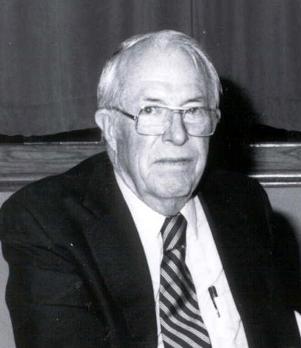
John Stewart Williamson, who wrote as Jack Williamson, was an American science fiction writer, one of several called the "Dean of Science Fiction". He is also credited with one of the first uses of the term genetic engineering. Early in his career he sometimes used the pseudonyms Will Stewart and Nils O. Sonderlund.
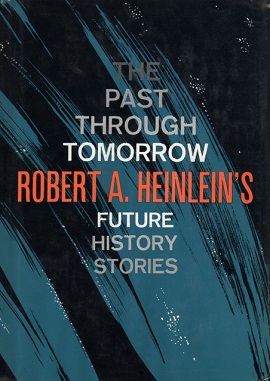
The Past Through Tomorrow is a collection of science fiction stories by American writer Robert A. Heinlein, first published in 1967, all part of his Future History.

Unknown was an American pulp fantasy fiction magazine, published from 1939 to 1943 by Street & Smith, and edited by John W. Campbell. Unknown was a companion to Street & Smith's science fiction pulp, Astounding Science Fiction, which was also edited by Campbell at the time; many authors and illustrators contributed to both magazines. The leading fantasy magazine in the 1930s was Weird Tales, which focused on shock and horror. Campbell wanted to publish a fantasy magazine with more finesse and humor than Weird Tales, and put his plans into action when Eric Frank Russell sent him the manuscript of his novel Sinister Barrier, about aliens who own the human race. Unknown's first issue appeared in March 1939; in addition to Sinister Barrier, it included H. L. Gold's "Trouble With Water", a humorous fantasy about a New Yorker who meets a water gnome. Gold's story was the first of many in Unknown to combine commonplace reality with the fantastic.

Waldo and Magic, Inc. is a book containing those two novellas, one science fiction, one fantasy, by American writer Robert A. Heinlein. It was published in 1950.

The Worlds of Robert A. Heinlein is a collection of science fiction short stories by American writer Robert A. Heinlein, published in 1966.
The science fiction writer Robert A. Heinlein (1907–1988) was productive during a writing career that spanned the last 49 years of his life; the Robert A. Heinlein bibliography includes 32 novels, 59 short stories and 16 collections published during his life. Four films, two TV series, several episodes of a radio series, at least two songs and a board game derive more or less directly from his work. He wrote the screenplay for Destination Moon (1950). Heinlein also edited an anthology of other writers' science fiction short stories.
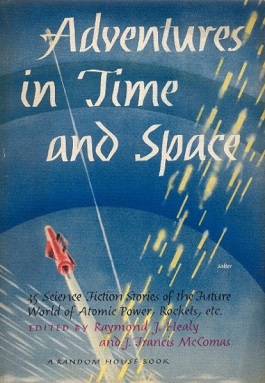
Adventures in Time and Space is an American anthology of science fiction stories edited by Raymond J. Healy and J. Francis McComas and published in 1946 by Random House. A second edition was also published in 1946 that eliminated the last five stories. A Modern Library edition was issued in 1957. When it was re-released in 1975 by Ballantine Books, Analog book reviewer Lester del Rey referred to it as a book he often gave to people in order to turn them onto the genre. It is now once again out of print.
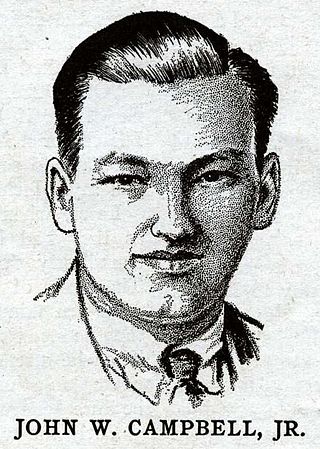
This is a bibliography of works by American writer John W. Campbell Jr.

Off the Main Sequence: The Other Science Fiction Stories of Robert A. Heinlein (ISBN 1-58288-184-7) is a collection of 27 short stories by American writer Robert A. Heinlein, including three that were never previously collected in book form.

Beyond Time and Space is an anthology of science fiction stories edited by American writer August Derleth. It was first published by Pellegrini & Cudahy in 1950. Several of the stories had originally appeared in the magazines The Century, The Atlantic Monthly, The Strand, Blue Book, Blackwood's Magazine, Weird Tales, Amazing Stories, Astounding Stories, Maclean's, The American Legion Magazine and Startling Stories. A heavily abridged paperback edition was issued by Berkley Books in 1958.
Shasta Publishers was a science fiction and fantasy small press specialty publishing house founded in 1947 by Erle Melvin Korshak, T. E. Dikty, and Mark Reinsberg, who were all science fiction fans from the Chicago area. The name of the press was suggested by Reinsberg in remembrance of a summer job that he and Korshak had held at Mount Shasta.
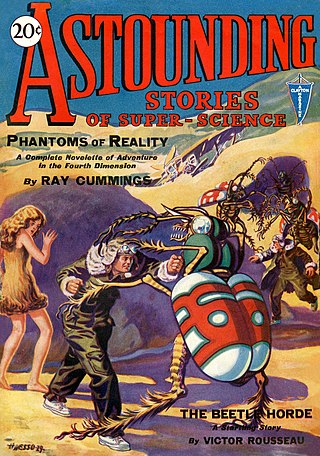
Analog Science Fiction and Fact is an American science fiction magazine published under various titles since 1930. Originally titled Astounding Stories of Super-Science, the first issue was dated January 1930, published by William Clayton, and edited by Harry Bates. Clayton went bankrupt in 1933 and the magazine was sold to Street & Smith. The new editor was F. Orlin Tremaine, who soon made Astounding the leading magazine in the nascent pulp science fiction field, publishing well-regarded stories such as Jack Williamson's Legion of Space and John W. Campbell's "Twilight". At the end of 1937, Campbell took over editorial duties under Tremaine's supervision, and the following year Tremaine was let go, giving Campbell more independence. Over the next few years Campbell published many stories that became classics in the field, including Isaac Asimov's Foundation series, A. E. van Vogt's Slan, and several novels and stories by Robert A. Heinlein. The period beginning with Campbell's editorship is often referred to as the Golden Age of Science Fiction.

In Search of Wonder: Essays on Modern Science Fiction is a collection of critical essays by American writer Damon Knight. Most of the material in the original version of the book was originally published between 1952 and 1955 in various science fiction magazines including Infinity Science Fiction, Original SF Stories, and Future SF. The essays were highly influential, and contributed to Knight's stature as the foremost critic of science fiction of his generation. The book also constitutes an informal record of the "Boom Years" of science fiction from 1950 to 1955.

Starburst is a collection of science fiction stories by American writer Alfred Bester, originally published in paperback by Signet Books in 1958. Signet issued at least four reprint editions of the collection over more than twenty years; British editions were published by Sphere Books and Pan Books.
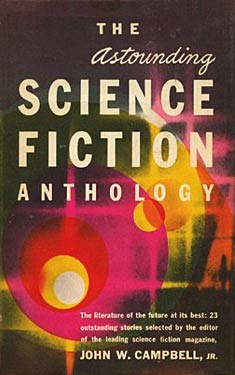
The Astounding Science Fiction Anthology is a selection of stories from Astounding Science Fiction, chosen by the magazine's longtime editor John W. Campbell Jr. It was originally published in hardcover in 1952 by Simon & Schuster, and reprinted in various forms and editions over the next two decades.

Born of Man and Woman is the first collection of science fiction and fantasy stories by Richard Matheson, published in hardcover by Chamberlain Press in 1954. It includes an introduction by Robert Bloch. A truncated edition, dropping four stories, was published by Bantam Books in 1955 as Third from the Sun.

The Explorers is a collection of science fiction stories by American writer C. M. Kornbluth, originally published in paperback by Ballantine Books in 1954. Ballantine reissued the collection, which was Kornbluth's first, in 1963. While no further editions of the collection were published, six of its nine stories were included in Ballantine's 1977 The Best of C. M. Kornbluth, and all the stories are contained in NESFA's 1997 His Share of Glory: The Complete Short Science Fiction of C. M. Kornbluth.

















